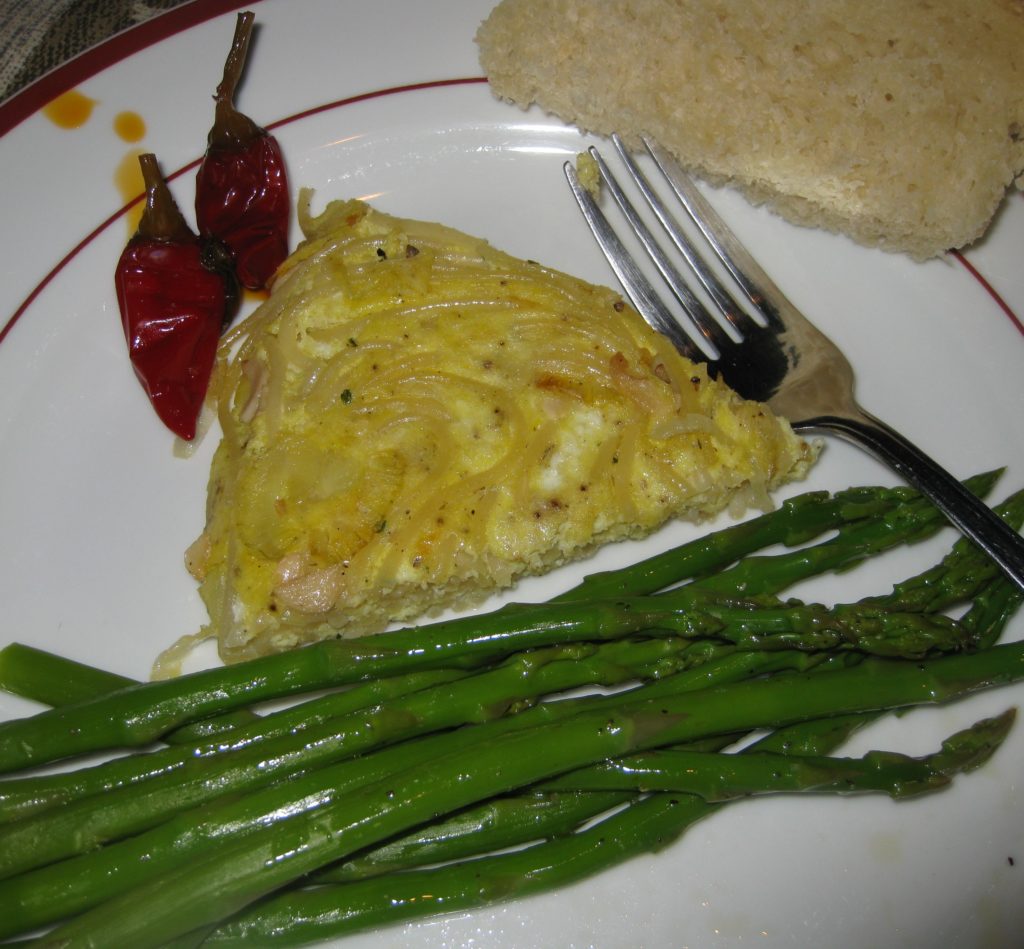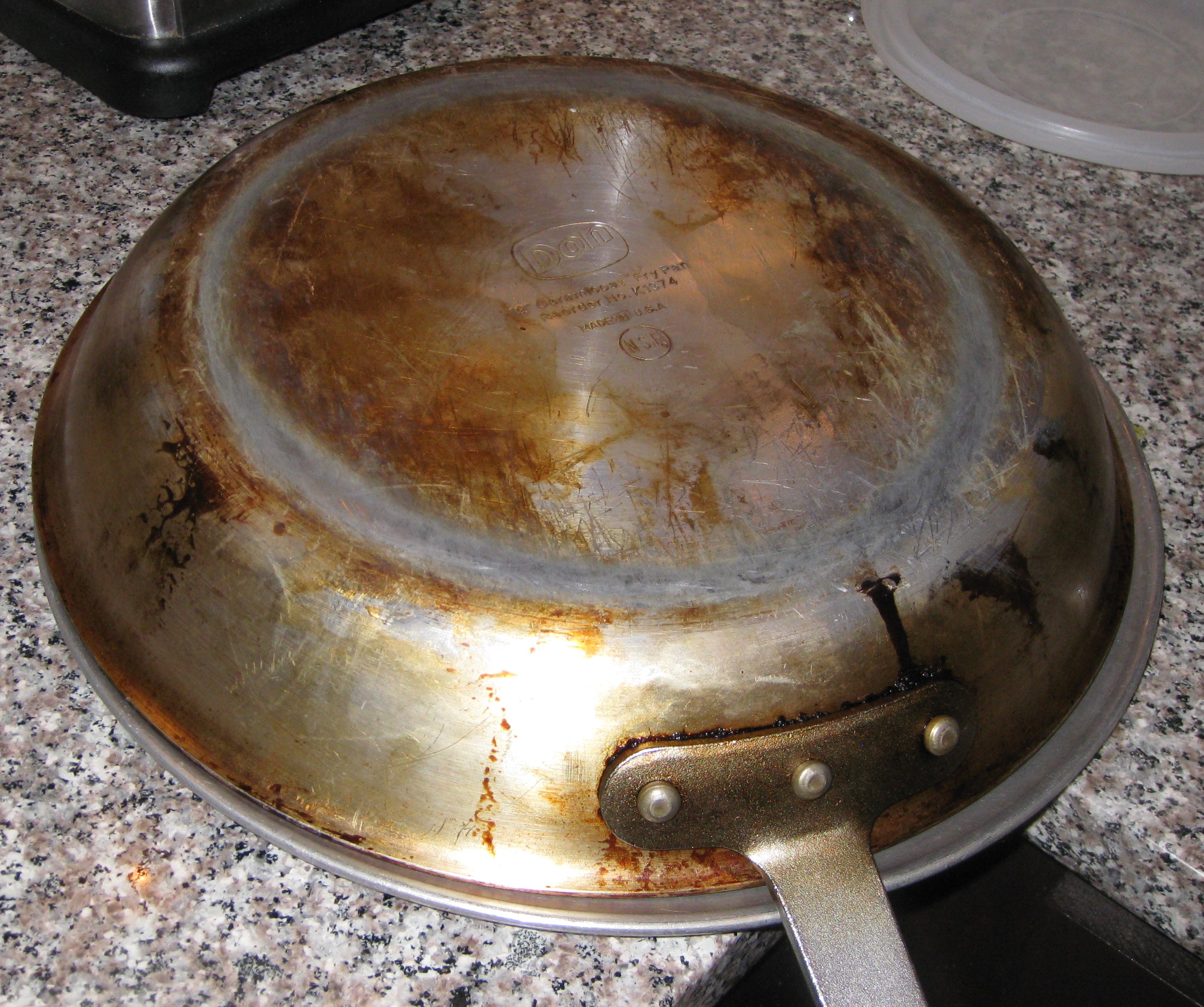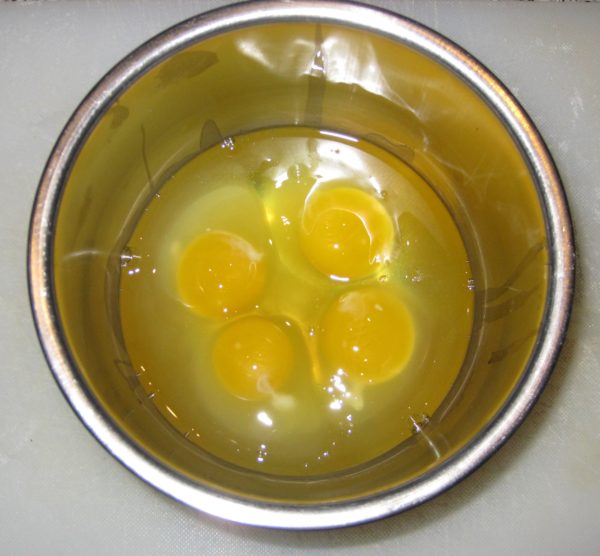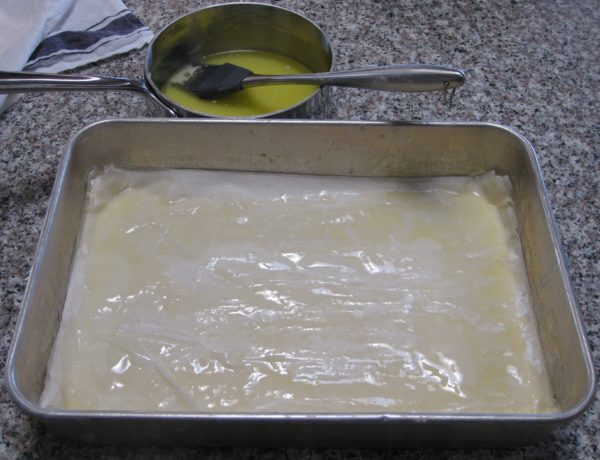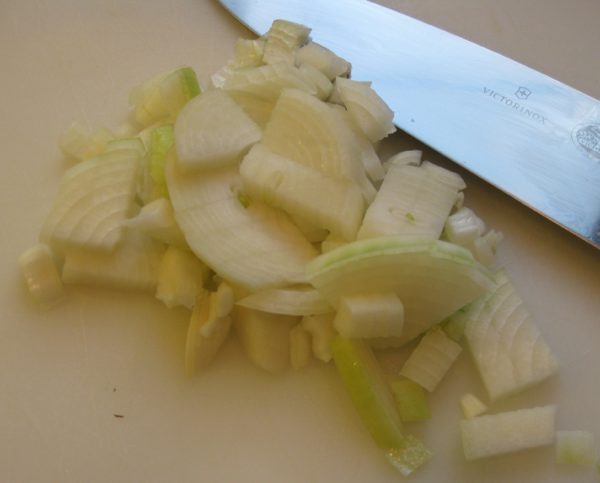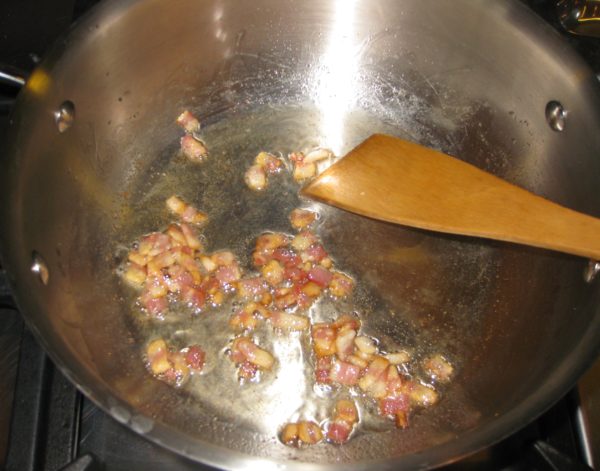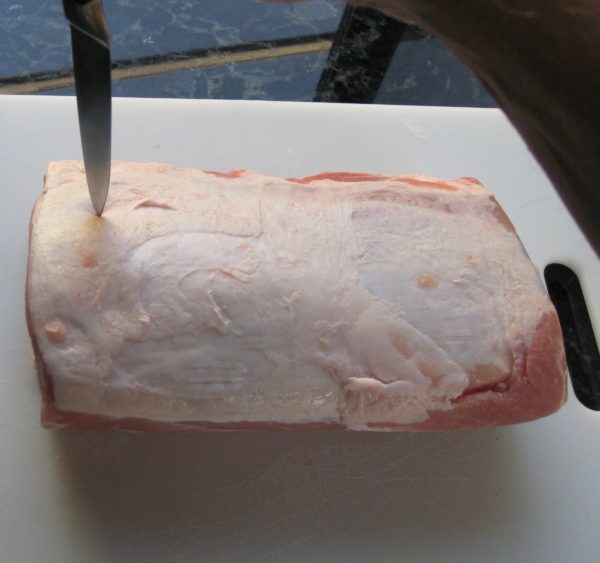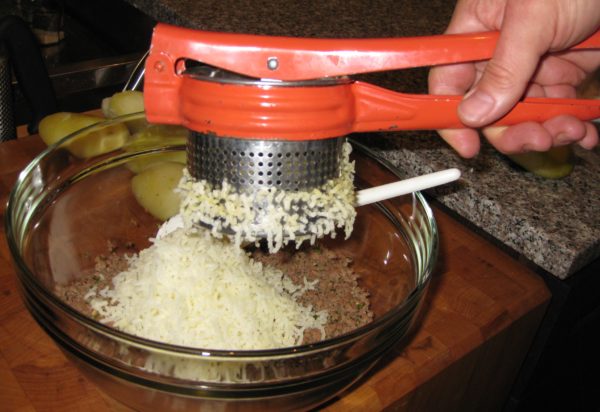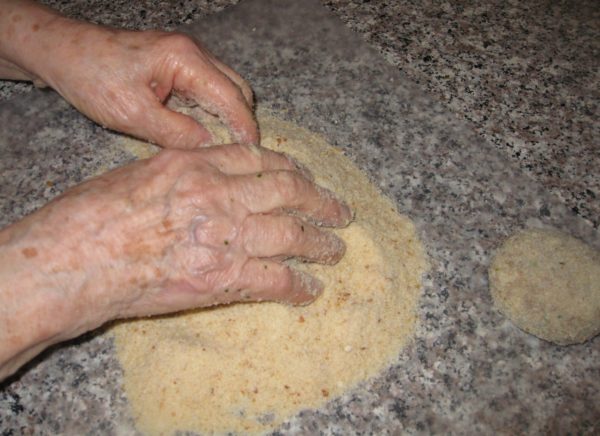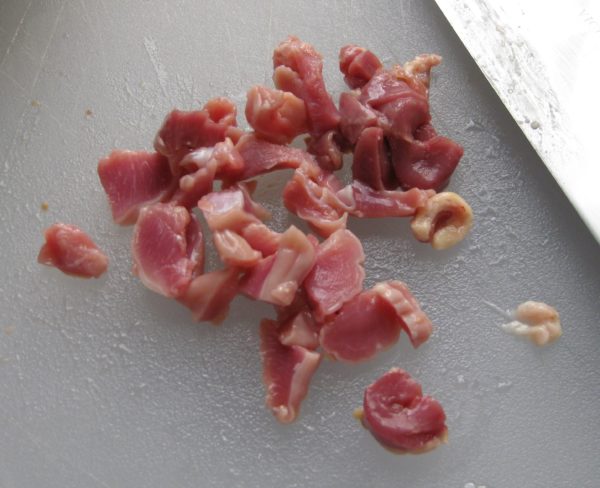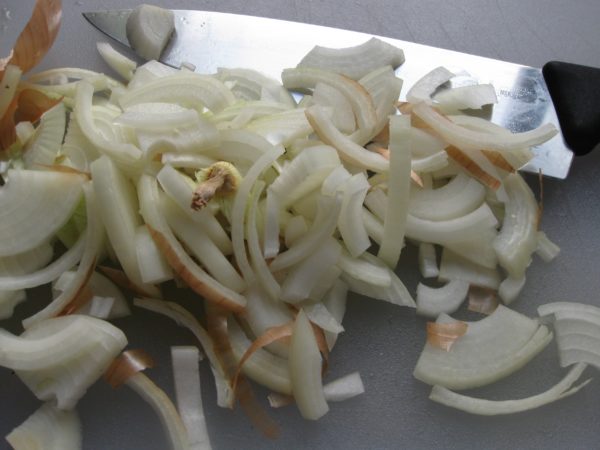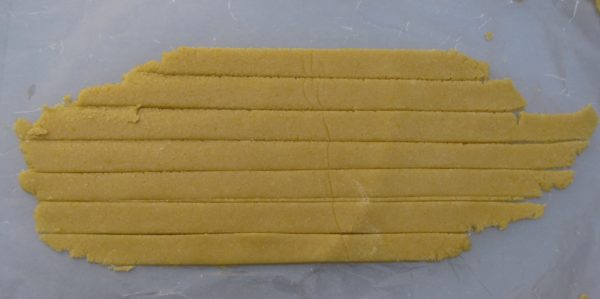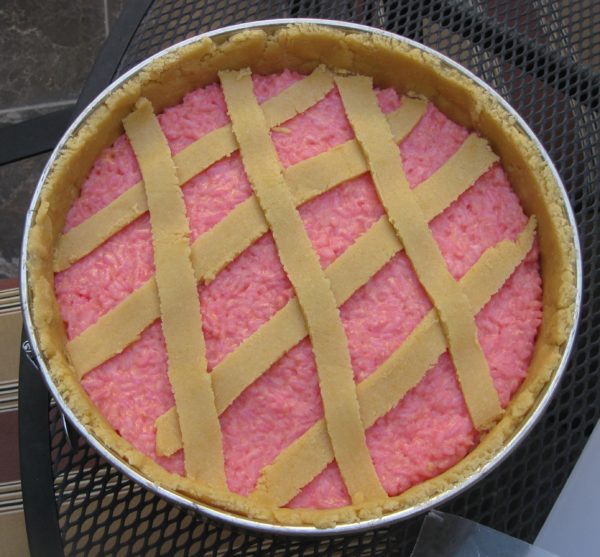March 14, 2018
Like many psychiatry residents, I used to moonlight to make extra money.
The money was good and the work was usually not difficult. Many moonlighting jobs required being on-premises overnight. Most of the time, this usually just involved sleeping but, again, not always.
One of my easier moonlighting jobs was at a private psychiatric hospital in the Philadelphia suburbs. I had to do the histories, physicals, and psychiatric evaluations on the newly admitted patients and then be available for any issues that came up during my shift. Usually I got to sleep all night.
This was in stark contrast to one of my other moonlighting jobs at the crisis service that covered a swath of northeast Philadelphia. The patients were more acute and admissions unplanned. Sleep was elusive.
Follow us on your social media platform of choice
One morning as I was finishing up some work on one of the units at the private psychiatric hospital I spied a pizza box in the staff lounge, clearly intended for anyone who wanted to have some.
I opened the box and was presented with my first tomato pie, basically a focaccia topped with a prodigious amount of a jam-like tomato sauce. There was no cheese and there were no toppings.
I had never heard of tomato pie like this. Sometimes the term tomato pie was applied to a run-of-the mill pizza, usually by my Uncle Joe, but this was a whole different creation.
Not only was it naked, except for the tomato sauce, the sauce was very dense (almost like tomato paste) and thickly applied to the dough.

Growing up, a regular mid-morning Sunday snack (after church and before our major meal of the day around 1:00 or so) was a bowl of my mother’s long-simmered tomato sauce that was almost always bubbling away on the stove on Sunday mornings and a stack of bread to dip into it. Italian bread was preferred but I’d make do with American “slice” bread if need be…often six slices…to hold me over until mealtime.
Tomato pie was heaven-made for someone like me. It was bread and sauce in an easy-to-eat package. No bowl or dipping required.
Click HERE to join our mailing list and you’ll never miss a recipe again!
It’s pretty astounding to realize that I had lived in Philadelphia for about 11 years before encountering my first tomato pie. I don’t really understand why. Two of the bastions of Philadelphia tomato pie are on Ninth Street, an area that I started going to my freshman year in college.
This article provides some interesting background on Philly-style Tomato Pie.
I’m a big fan of making dough for pizza and focaccia in my bread machine. If you don’t have a bread machine, use a mixer with a dough hook. Failing that, some elbow grease and a smooth kitchen counter will do the trick.
If you have a favorite family recipe and a bit of a story to tell, please email me at santafecook@villasentieri.com and we can discuss including it in the blog. I am expanding the scope of my blog to include traditional recipes from around the country and around the world. If you haven’t seen Bertha’s Flan or Melinda’s Drunken Prunes, take a look. They will give you an idea of what I’m looking for.
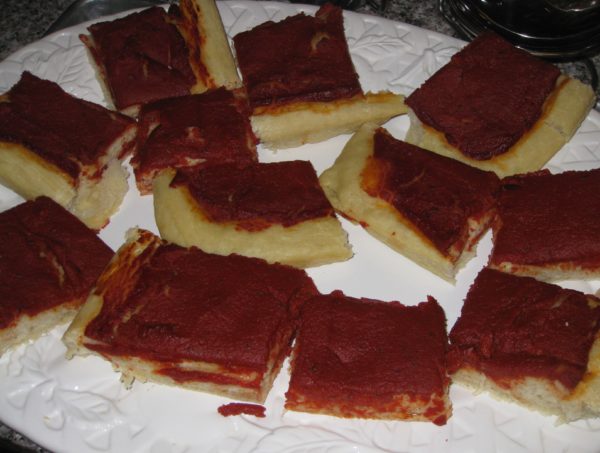
| Prep Time | 15 minutes |
| Cook Time | 35 minutes |
| Passive Time | 24 hours |
| Servings |
pieces
|
- 2 cups tomato puree
- 1 x 6 ounce can tomato paste
- 2 cloves garlic
- 1 teaspoon dry oregano
- 1 teaspoon salt plus more to taste if needed
- 1 teaspoon sugar
- 680 g bread flour
- 440 ml water
- 2 1/2 teaspoons salt
- 45 ml olive oil
- 2 1/2 teaspoons active dry yeast or one package
- 2-3 tablespoons extra virgin olive oil to oil sheet pan
Ingredients
Sauce
Dough
Assembly
|

|
- Grate the garlic on a Microplane grater or crush to a paste.

- Combine all the ingredients for the sauce.




- Cover the sauce and refrigerate overnight.
- Before using, taste and adjust seasoning.
- Prepare the dough using the dough cycle of the bread machine.
- At the end of the cycle put the dough into an oiled bowl or covered container and allow to rise until doubled.

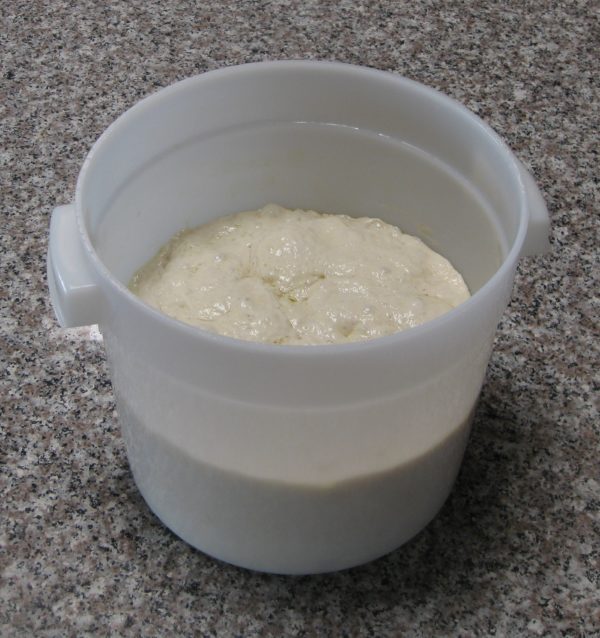
- Oil a half-sheet pan (13" x 18") with a few tablespoons of olive oil.

- Stretch dough into the pan.


- The dough will spring back. Stretch it out then allow it to rest a few minutes. Stretch more, then allow it to rest a few minutes. With resting in between stretches, the gluten will relax and the dough won't spring back.

- Cover the pan. I invert another half-sheet pan on top.

- Allow to rise until doubled, approximately 30 minutes.
- Spread all of the sauce on top.
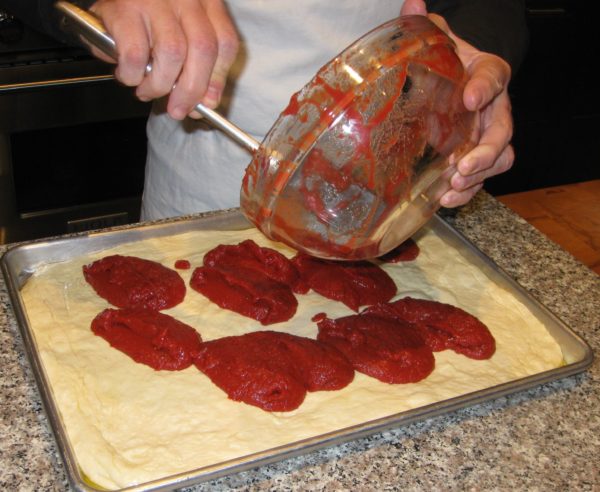



- Bake at 350°F until crust is browned and sauce is thick, approximately 35-45 minutes.

- Cool in the pan.
- Cut into squares and serve at room temperature.

- Sprinkle with grated Pecorino cheese, if desired, once cool.
Copyright © 2018 by VillaSentieri.com. All rights reserved.



